One of the issues with camping on frozen lakes and rivers is how to peg out your tent. If there is a decent covering of snow you can anchor your tent to deadmen buried in the snow. Deadmen can be made from bits of wood, skis, snowshoes, shovels etc. In the photo below you can just about see where my skis are buried on the right of frame. I have also anchored my tent to my rucksacks.
Tent secured with deadmen and rucksack anchors
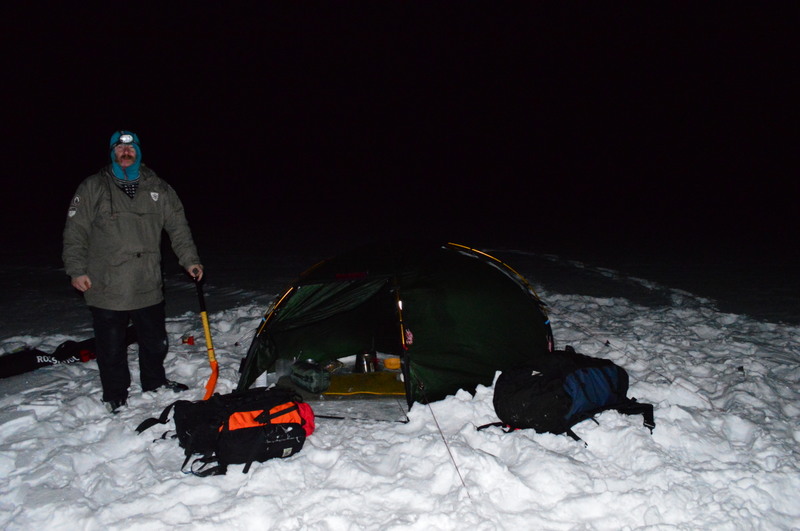
Even though my tents are of a free-standing design I always peg them out as best I can as this makes them less liable to flap and much less liable to turn into a kite should the winds pick up in the night as they often do. Special tent pegs for snow (made by MSR, Alpkit etc) are available but they tend to only work in snow that has consolidated after a few freeze/thaw cycles. I haven't had much luck with them and don't believe that they justify their not so inconsiderable weight in my pack.
So if there's a healthy covering of snow we're OK but what do we do on pure ice? I've heard of people carrying a hammer and six inch nails, drastic but effective.
If you're a winter mountaineer you may be carrying a rack of about 6 to 12 ice screws - problem solved.
If you're not on a mountaineering trip then you probably won't want to spend £50 a piece on screws, and then there's the matter of their weight. The solution I use was developed by a Russian climber by the name of Vitali Abalakov - the Abalakov thread. You need one long ice screw (22cm or 19cm) and a bit of bent wire. You simply use the screw to bore out two holes in the ice at 45 degrees to each other. The two holes must intersect. The bent wire is used to thread cord through the boreholes. By using this method you can make many anchor points using only one ice screw. Obviously the screw itself will form one of your anchor points.
Single 22cm ice screw on thick ice
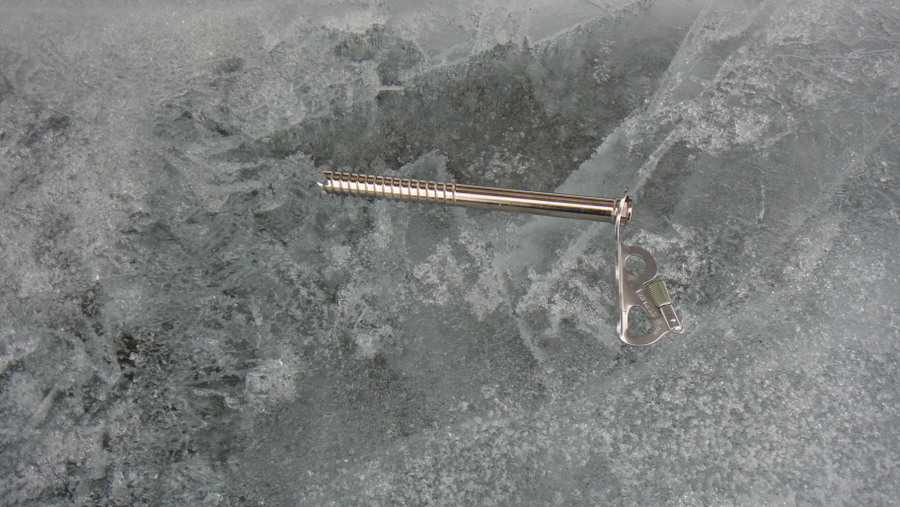
Boring the first hole

Remove ice core from screw with 'special tool'.
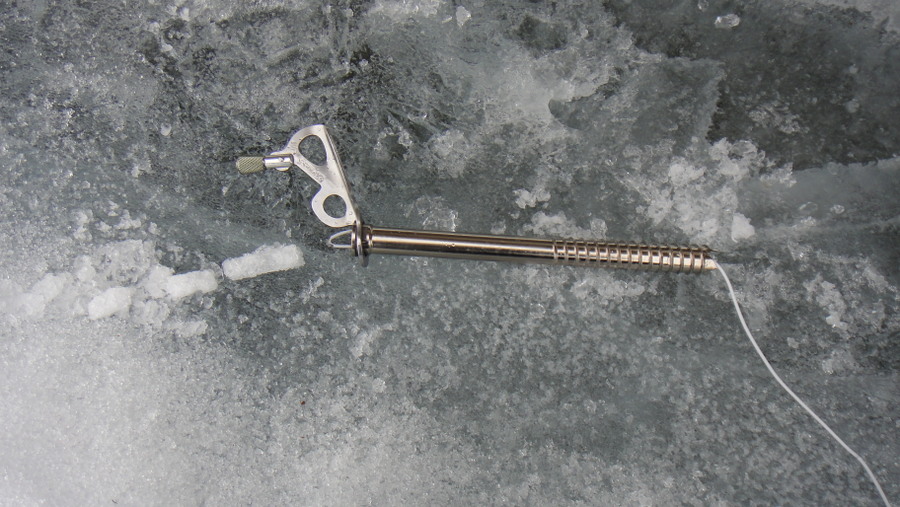
After removing the ice from inside the screw you can then bore your second intersecting hole.
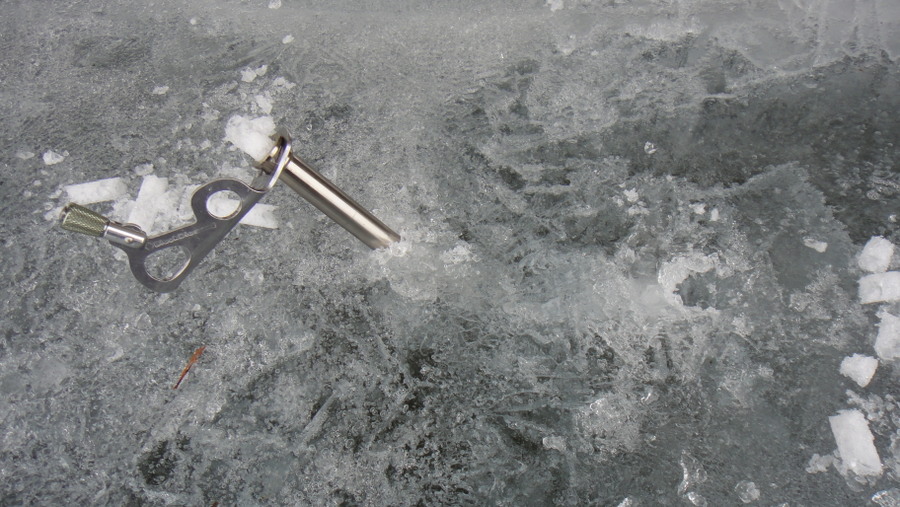
Using your 'special tool', thread the cord through the hole.

Tie off the cord to form your Abalakov thread

With a bit of practice you can make each anchor point in under two minutes. Special threading tools are available at great cost but I find a bent coat-hanger perfectly serviceable. Below are shots of my tent secured with Abalakov threads.
Pulling the thread through.
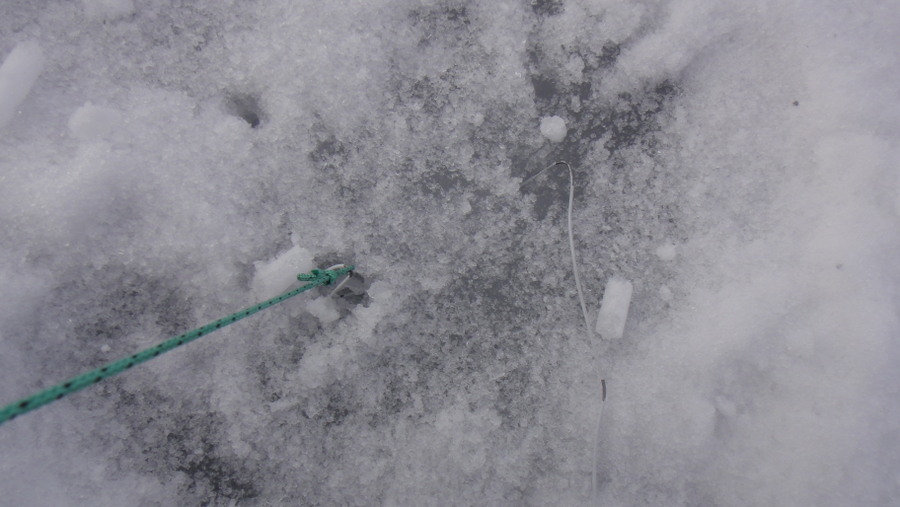
The first (windward) thread is completed.
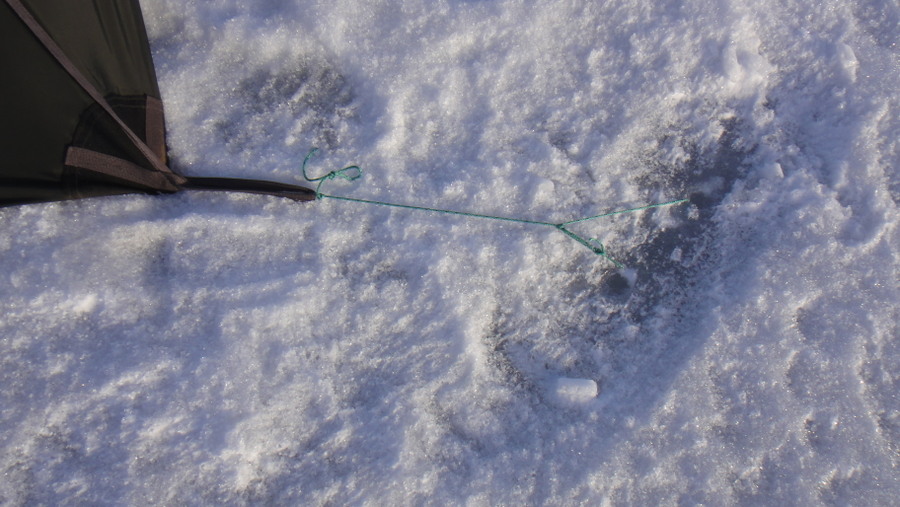
Tent pegged out with six anchor points.
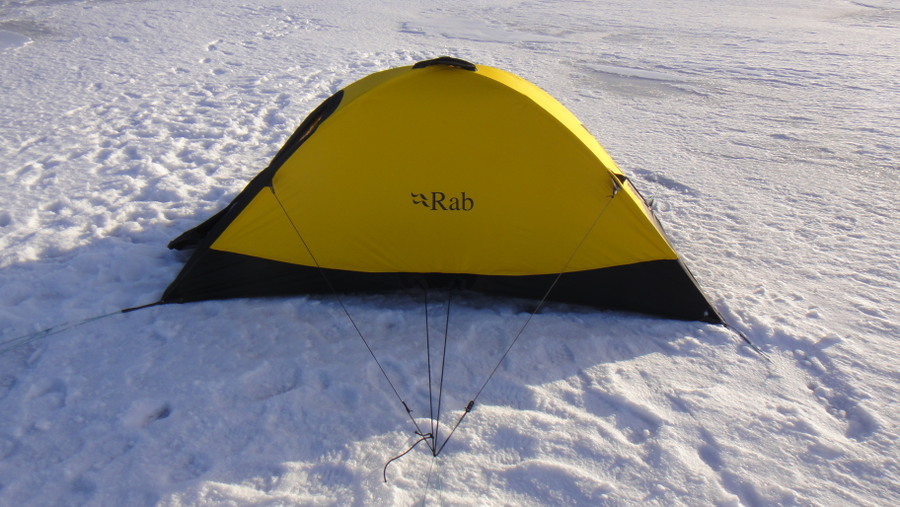
Nothing to see here, move along...
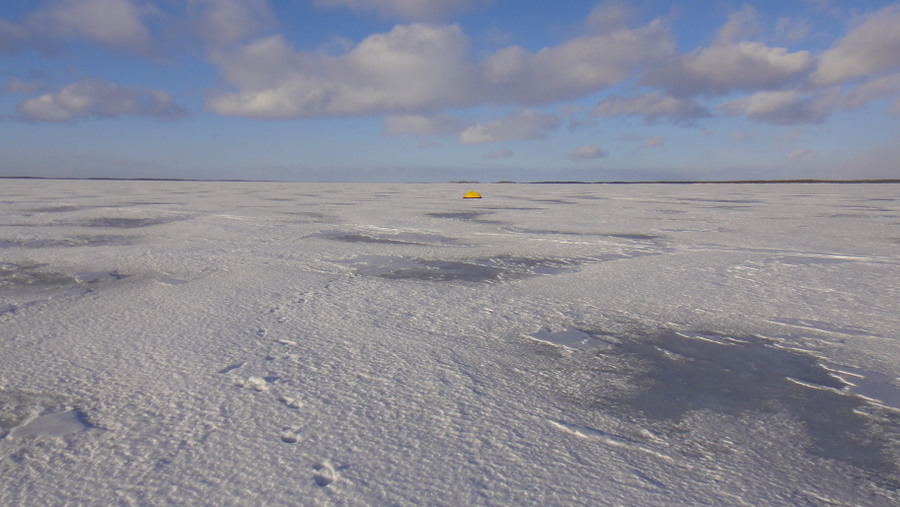
Info about Abalakov can be found here.
Tent secured with deadmen and rucksack anchors

Even though my tents are of a free-standing design I always peg them out as best I can as this makes them less liable to flap and much less liable to turn into a kite should the winds pick up in the night as they often do. Special tent pegs for snow (made by MSR, Alpkit etc) are available but they tend to only work in snow that has consolidated after a few freeze/thaw cycles. I haven't had much luck with them and don't believe that they justify their not so inconsiderable weight in my pack.
So if there's a healthy covering of snow we're OK but what do we do on pure ice? I've heard of people carrying a hammer and six inch nails, drastic but effective.
If you're a winter mountaineer you may be carrying a rack of about 6 to 12 ice screws - problem solved.
If you're not on a mountaineering trip then you probably won't want to spend £50 a piece on screws, and then there's the matter of their weight. The solution I use was developed by a Russian climber by the name of Vitali Abalakov - the Abalakov thread. You need one long ice screw (22cm or 19cm) and a bit of bent wire. You simply use the screw to bore out two holes in the ice at 45 degrees to each other. The two holes must intersect. The bent wire is used to thread cord through the boreholes. By using this method you can make many anchor points using only one ice screw. Obviously the screw itself will form one of your anchor points.
Single 22cm ice screw on thick ice

Boring the first hole

Remove ice core from screw with 'special tool'.

After removing the ice from inside the screw you can then bore your second intersecting hole.

Using your 'special tool', thread the cord through the hole.

Tie off the cord to form your Abalakov thread

With a bit of practice you can make each anchor point in under two minutes. Special threading tools are available at great cost but I find a bent coat-hanger perfectly serviceable. Below are shots of my tent secured with Abalakov threads.
Pulling the thread through.

The first (windward) thread is completed.

Tent pegged out with six anchor points.

Nothing to see here, move along...

Info about Abalakov can be found here.

